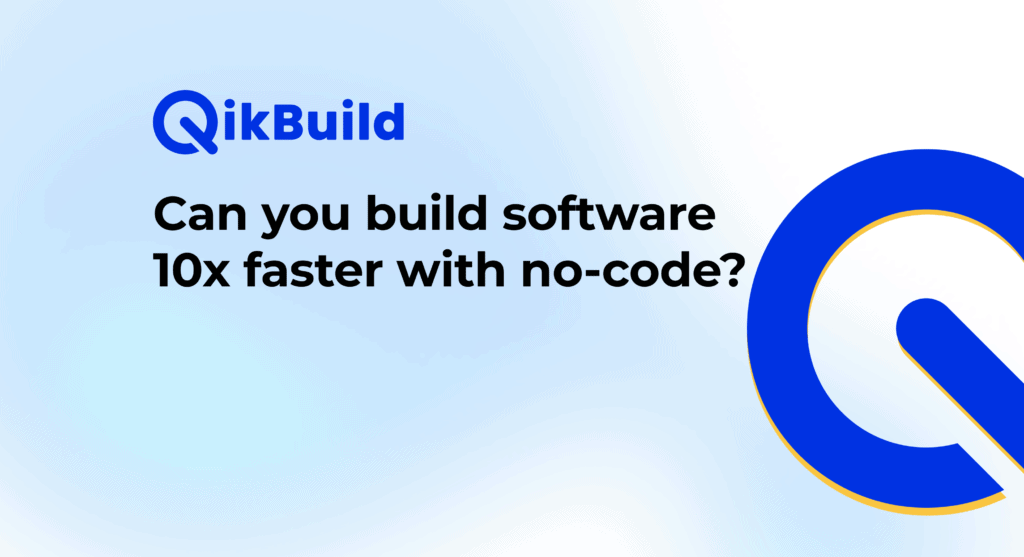The goal is clear: Idea to software, 10x faster than traditional full-code development.
With no-code development there are many use-cases, when you can build your product(web or mobile app) a lot faster than with traditional “full-code” development, the difference can be 3x, 5x or 10x compared with the traditional development.
Table of Contents
Question #1: What is the average cost and time to build an MVP with no-code development?
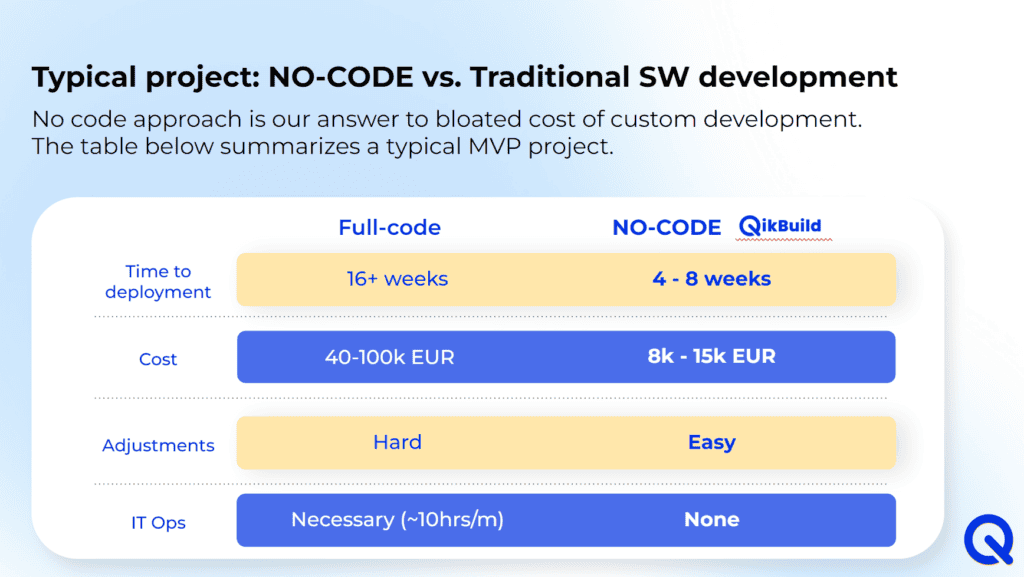
What is no-code development?
No-code is a software development approach that usually doesn’t require any programming skills and is often called visual programming, mainly because the software is built using drag and drop editors for front-end and the same for backend logic.
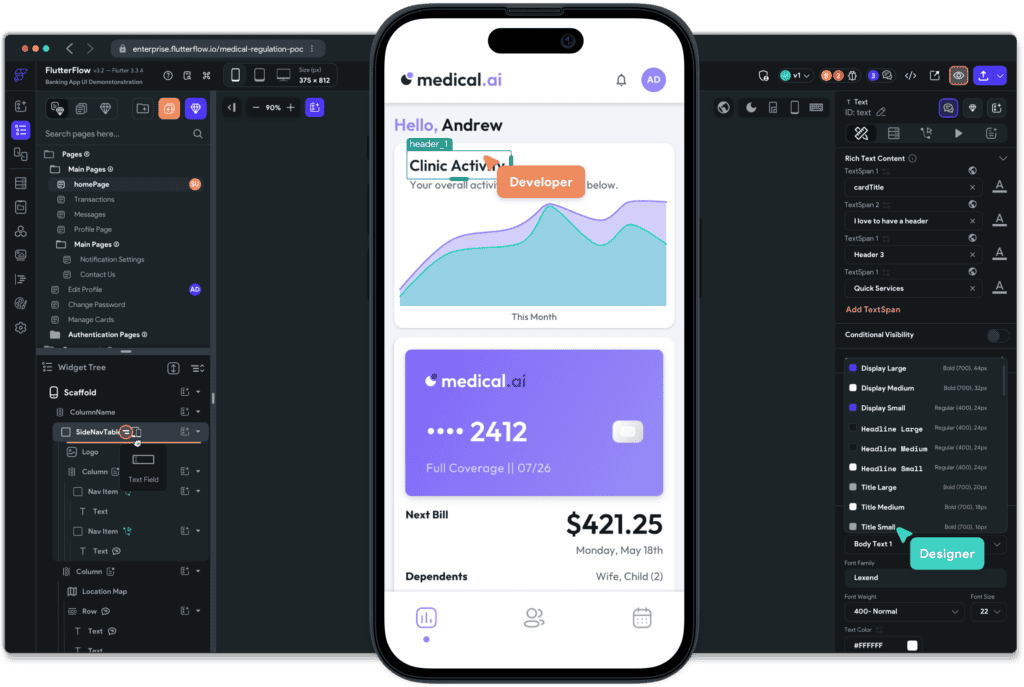
No-code software development allows you to build the same type of apps as you would do with the traditional development, but a lot faster. The main advantage of no-code development is that you can re-use existing components and functionalities instead of building everything from scratch.
There’s often a misconception that building applications in no-code is just editing some pre-built templates. (for example like WordPress templates)
That’s usually not the case. Of course most of these no-code and low-code development platforms allow you use templates. You can use them or you can start with a “clean plate”. Even if you don’t use existing template for your idea, you can create a an application in no-code 10x faster compared to traditional development,
Let’s be honest, most of the applications consist are just a combination of some basic operations, non-rocket-science backend logic, some nice UI and interactive dashboards, few(or a lot of) integrations and some data processing/aggregation. This applies for most SaaS, marketplaces, directories, CRMs, internal tools, AI apps (usually AI is one of the integrations) etc.
So If you’ll be worried that no-code approach will be limiting you in product development, I can assure you that 99% of the times that won’t be the case. Current no-code development platform allow you to build almost anything, regardless if it’s SaaS, directory, marketplace, airbnb/booking clone, UBER clone or anything else.
Why should you decide for no-code development?
Usually, IT project means heavy budgets, >6 months never-ending system maintenance. That is case for most of traditional development project. If you ever been part of at least one bigger software project, you’ll probably agree.
With no-code development, you can solve all three of these issues:
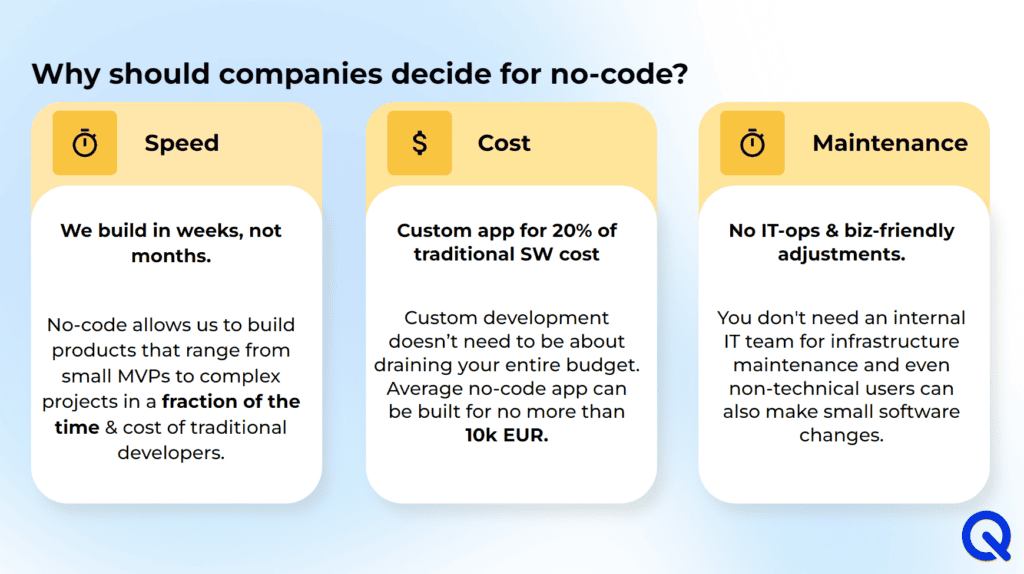
These are top reasons why any company (startup, SME, enterprise) should consider no-code software development.
- Build features faster: When launching a new product, it’s crucial to be able to launch as soon as possible, gather feedback and pivot if necessary. No-code development allows you to have your MVP ready in less than 1 month and make quick changes based on user/market feedback
- Reduce development costs: Development costs for startups are high because IT resources are expensive and it usually takes a lot of time to build the product. In QikBuild we believe that success of a startup should not be dependent on technology costs but rather on viability of business idea. So if the speed of development is fraction of time compared to traditional development, so is the cost.
- Maintenance: No-code tools usually doesn’t require any maintenance(database upgrades, external integrations maintenance etc.) required for your app going smoothly.
- Better IT-business collaboration: Given that many small changes can be implemented by teams without any technical knowledge (changing static texts, alignments, colors etc.), IT department can focus on the “hard stuff”, instead of spending time on things that are below their expertise
What no-code tools do we recommend for 10x faster development?
Web applications
WeWeb
WeWeb is the tool you want to choose when building front-end for web applications, whether it’s SaaS, marketplace, CRM or any internal tool.
WeWeb has a comprehensive UI editor with hundreds of pre-built components, it allows to create front-end business logic, provide pre-built connectors to back-ends such as Xano, Supabase and some others.
What we really love about WeWeb, is that you can import your own Vue.js components from your Github repository and you can also export and self-host the entire application
You can read our review using WeWeb combined with Xano against Bubble for no-code development of web applications.
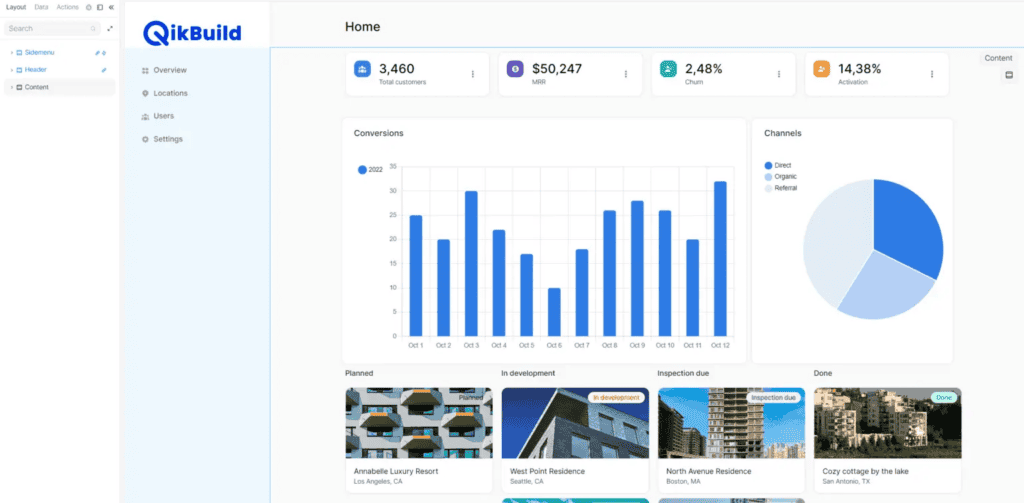
Bubble.io
We’ve worked with Bubble for quite few years and we have to say that it really is one of the most powerful all-in-one no-code development platforms.
It combines UI builder for front-end with managed database, so that you don’t have to build your app with two different tools.
However after spending few years with Bubble, we believe that it’s a great choice for more simple applications, but when you need to build something that you know for sure will grow into complex app, we would recommend an alternative. (as mentioned above)
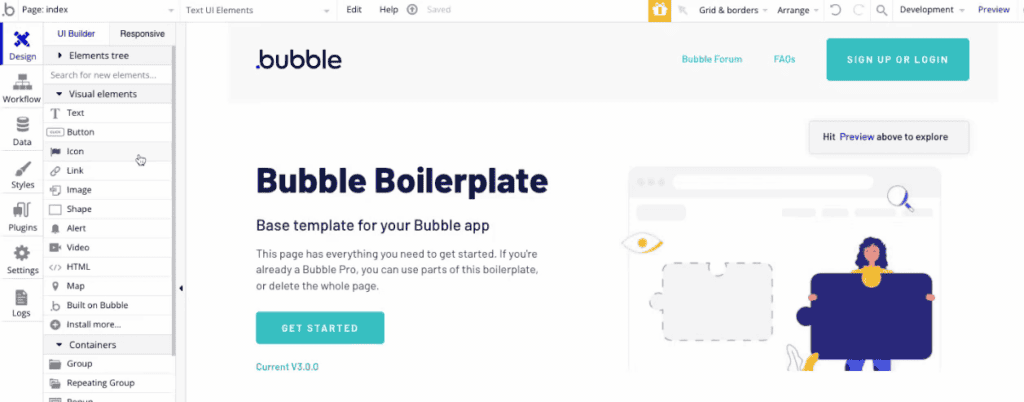
Retool
If you are building a tool for internal use, Retool is really worth a considerations. What we really like about it, is that it’s not trying to be all-in-one for every possible use-case, but the are focusing specifically on building internal tools.
However there’s one thing we actually don’t like – and that’s pricing. Here you have to also pay for the end user. (e.g. your employees using the app you’ve built with Retool)
Most of the no-code development platforms have different pricing – performance/resource based.
But if this is not an issue, we think you’ll like Retool a lot.
Mobile applications
FlutterFlow
FlutterFlow is currently the most powerful no-code development platform for mobile applications. That’s all you need to know when you’re considering to build a mobile app with no-code stack.
That doesn’t necessarily means that it might be ideal one to build your project. FlutterFlow is really powerful, but it also means it has steeper learning curve than some of the other mobile development platforms.
If you are thinking about building a professionally looking, customer facing mobile app, we definitely recommend FlutterFlow, but if you want to build a personal/hobby app or some simple internal application, we recommend to keep scrolling. The other two platforms might be a better fit.
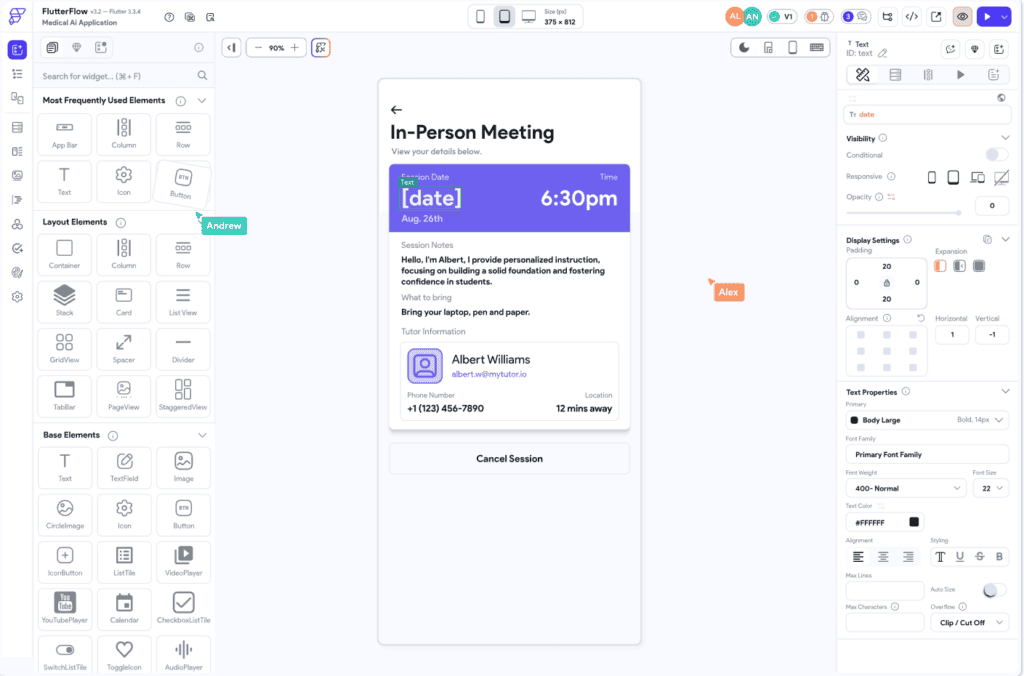
Adalo
We like Adalo mainly for its simplicity. Almost anyone can build a simple mobile application in Adalo, without the need of having separated back-end.
What you need to consider is that with it’s simplicity, there’s a high chance you’ll find many limitations either from UI or business logic perspective.
But again, let’s be honest, most of the internal or hobby apps doesn’t require so much flexibility so there’s good chance that Adalo might be a great fit for simple projects
Back-end & automations
Xano
Managed database, no-code API builder, re-usable functions, custom code lambda functions, authentication and many more is what Xano offers.
For quite some time, Xano has been our go-to platform for projects of almost all sizes. Whether you are building simple internal app, complex SaaS applications or enterprise-level software, Xano can cover all you need to build secure, scalable and reliable back-end.

Make
Make is an amazing tool for all types of automations. It can be used to automate day-to-day tasks, help with team-level automations or setup company wide processes. All in a single tool.
With it’s database of thousands of pre-built connectors, you can integrate multiple apps together within just few clicks, instead of spending months integrating them together with traditional development.
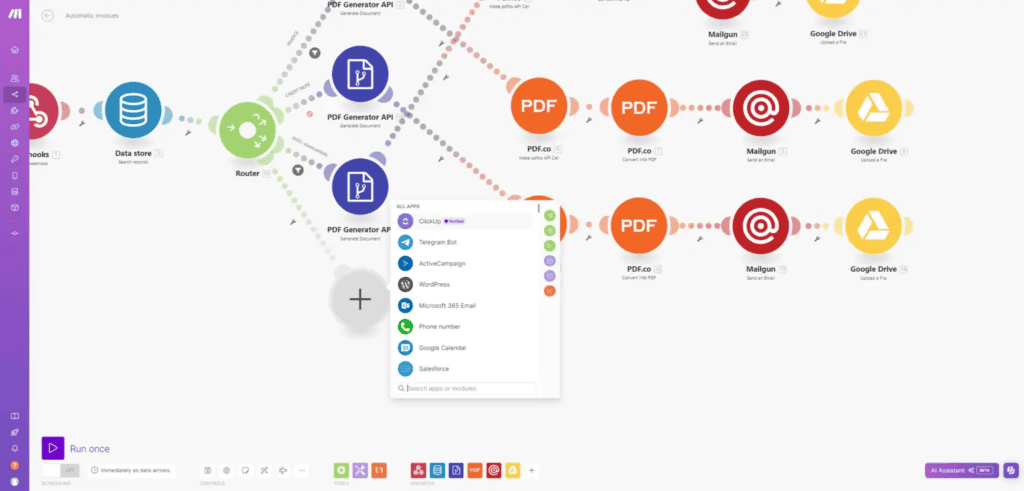
Are there any limitations of no-code development?
There are and there aren’t. But the limitations are not where most people think they are.
- Features & UI: >90% of features withing your product can be built in no-code with pre-build functionalities. And if it happens you’ll hit the limit – most of the platforms (we use mainly WeWeb & Xano) allows you to use custom code on both frontend and backend
- Scaling: We often hear that with no-code apps, you can scale only for MVP with few users. This is one of the most often misconception about no-code development. With platforms like Xano, you can scale to thousands or millions of users for your app.
- Vendor lock-in and technology: These no-code development platforms use specific technologies to build your app. In most cases, you can’t just switch the underlying technology for another (let’s say switch Vue to React in WeWeb or switch PostgreSQL DB to MySQL DBin Xano)

Let’s build together 10x more efficiently
The goal of this post was to give you a better overview about no-code software development and how can it help you to make IT projects “less of a pain”.
Do you want to know how much would it cost to develop your application using no-code tech stack?
Book a short call with our CEO and we can conclude some budget ranges even after initial discovery call.

